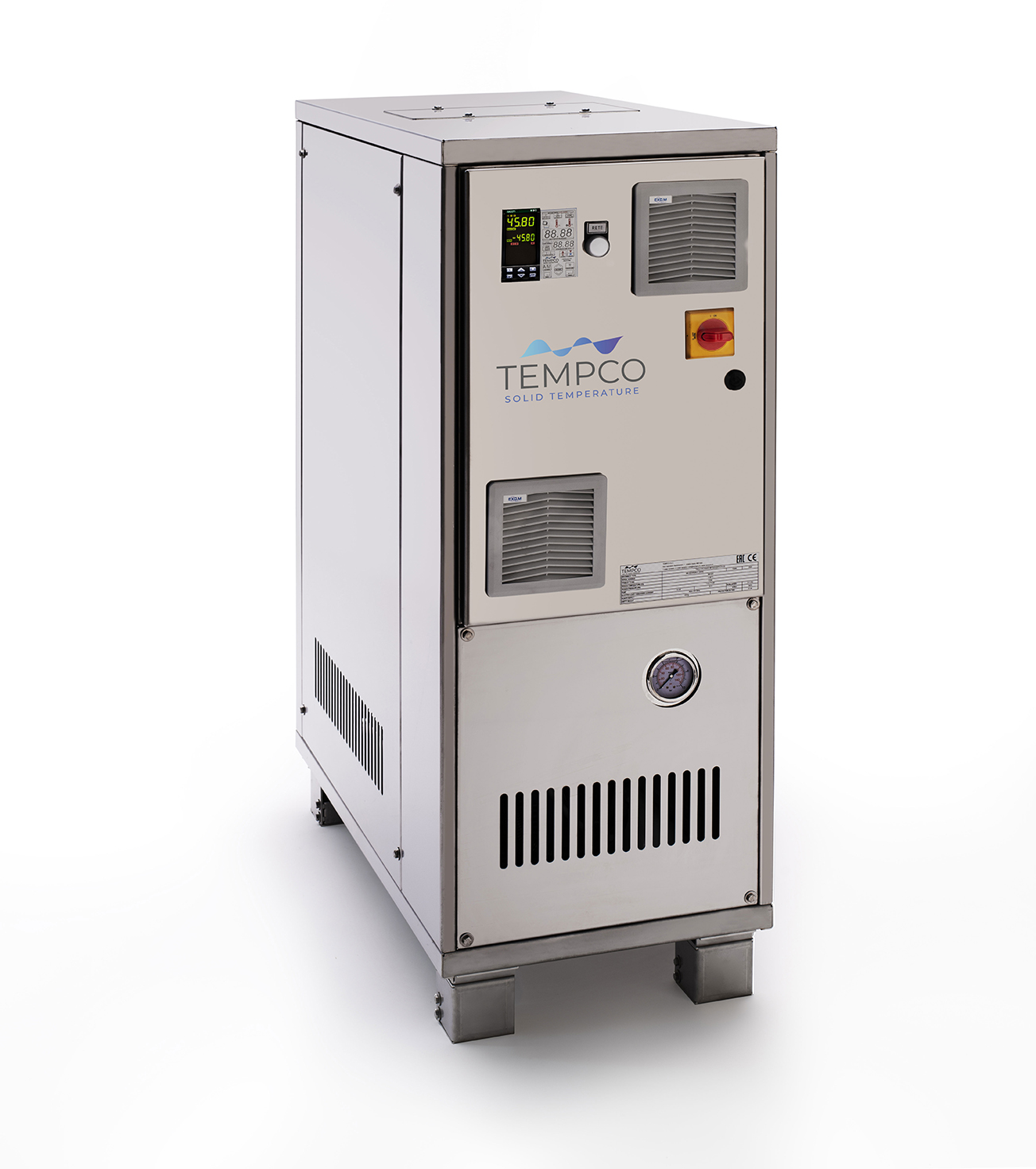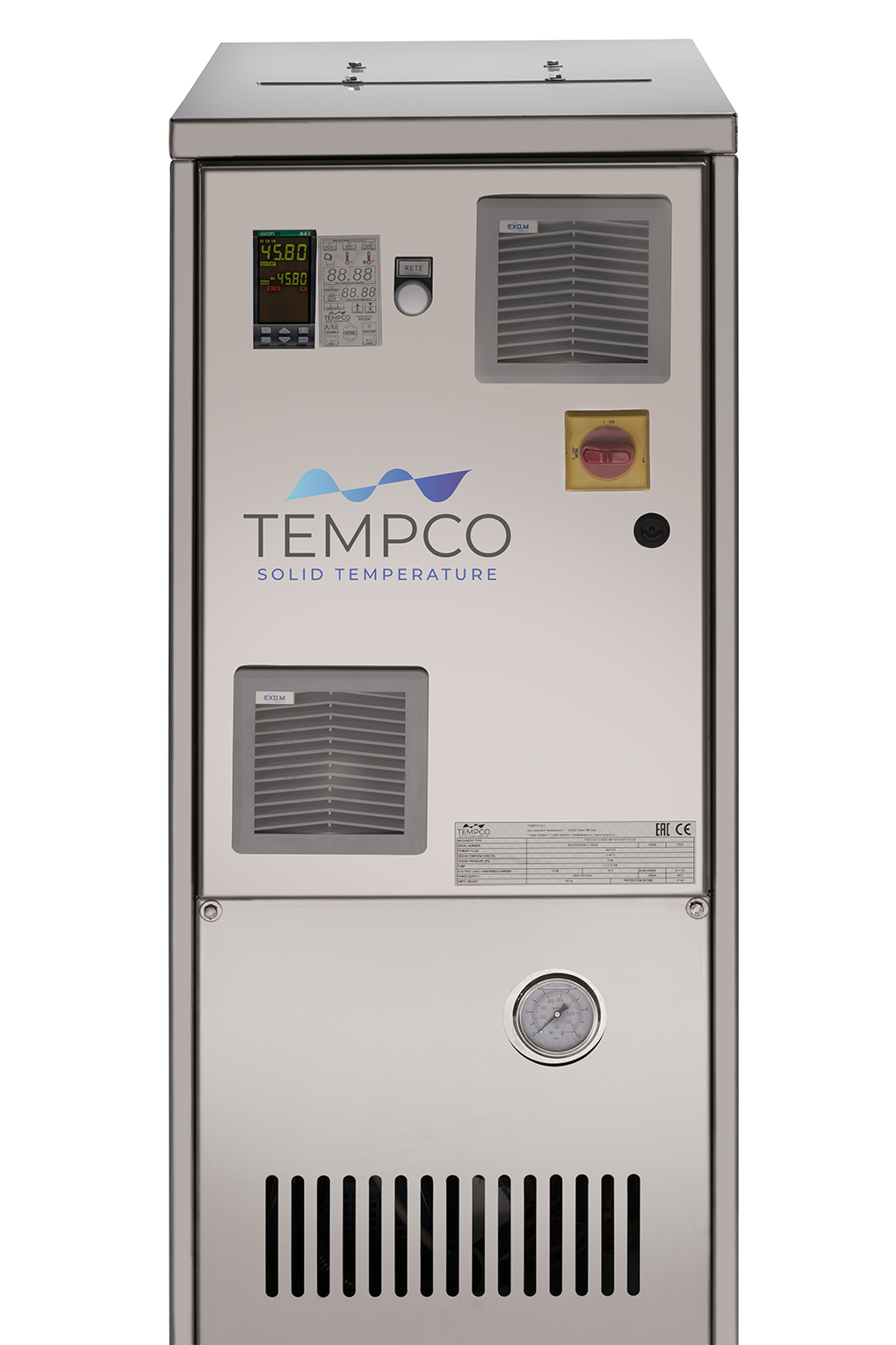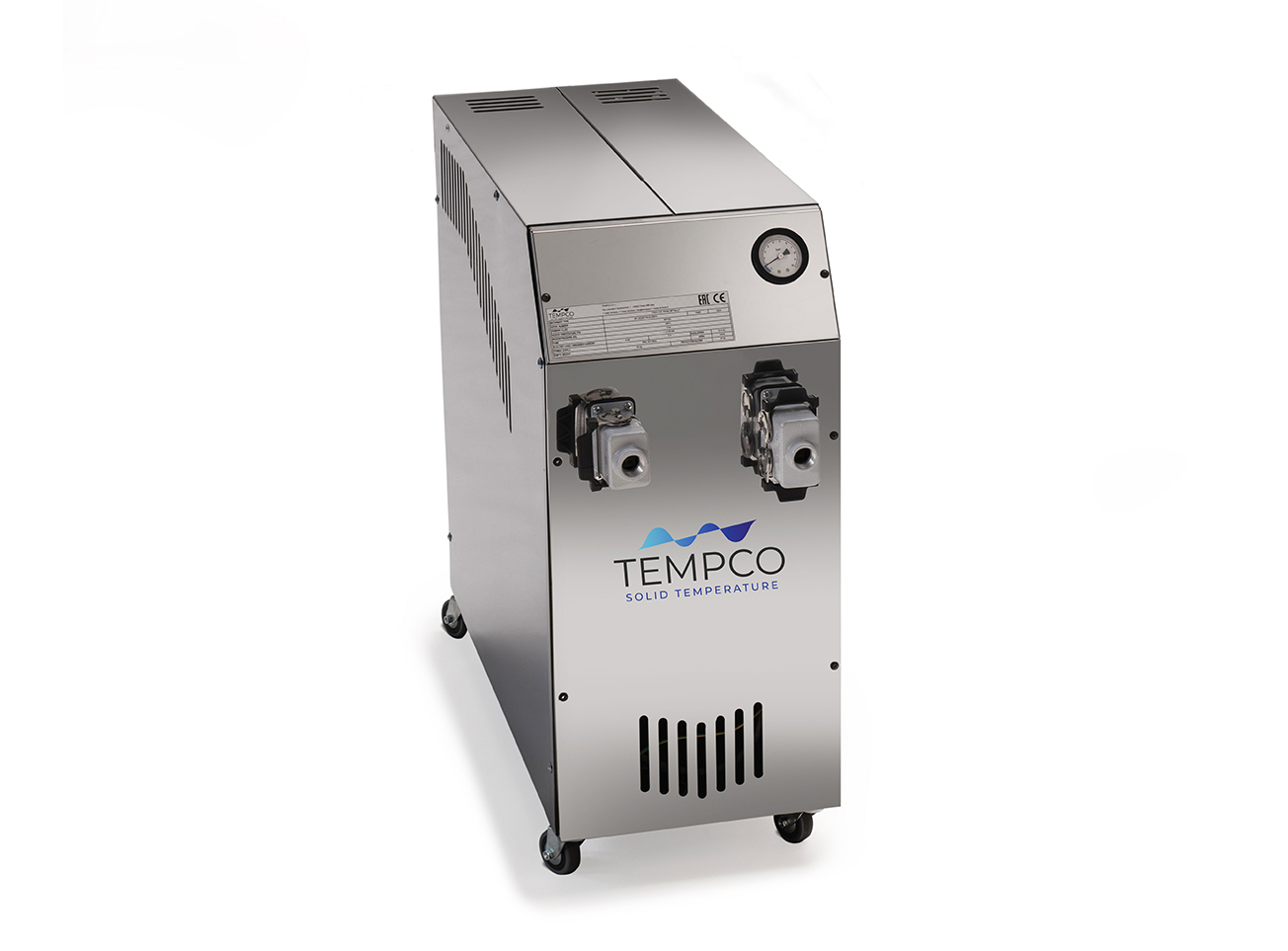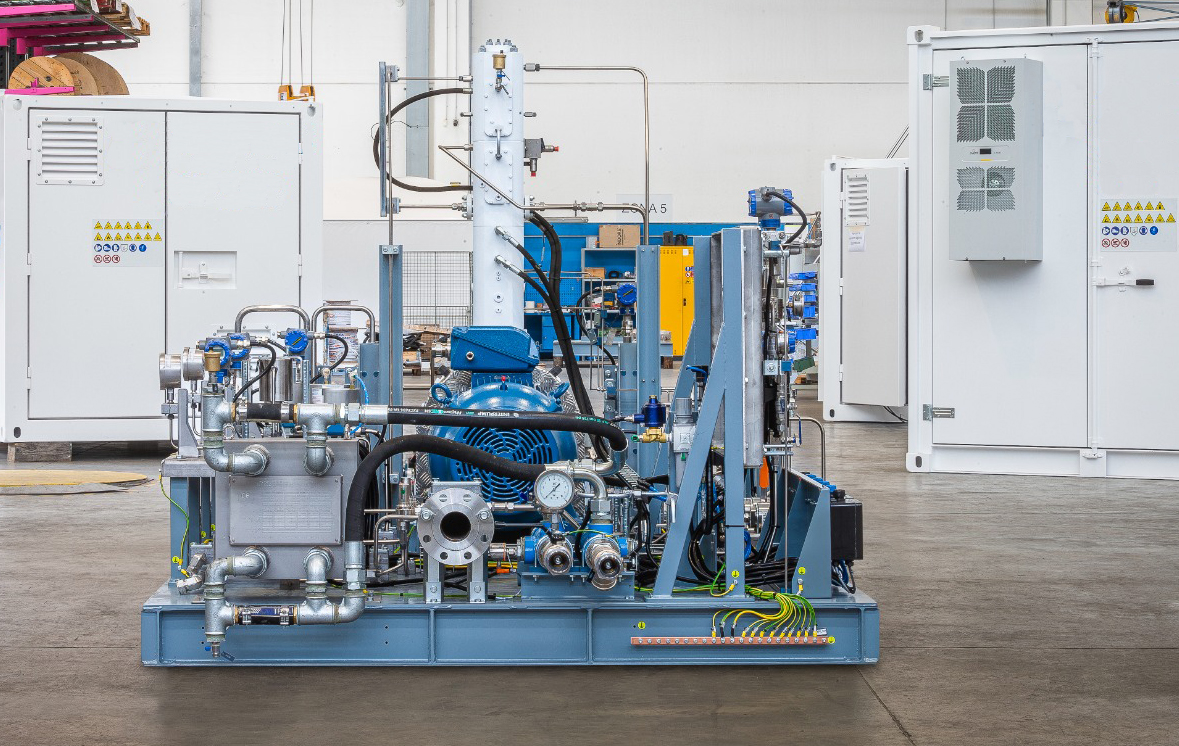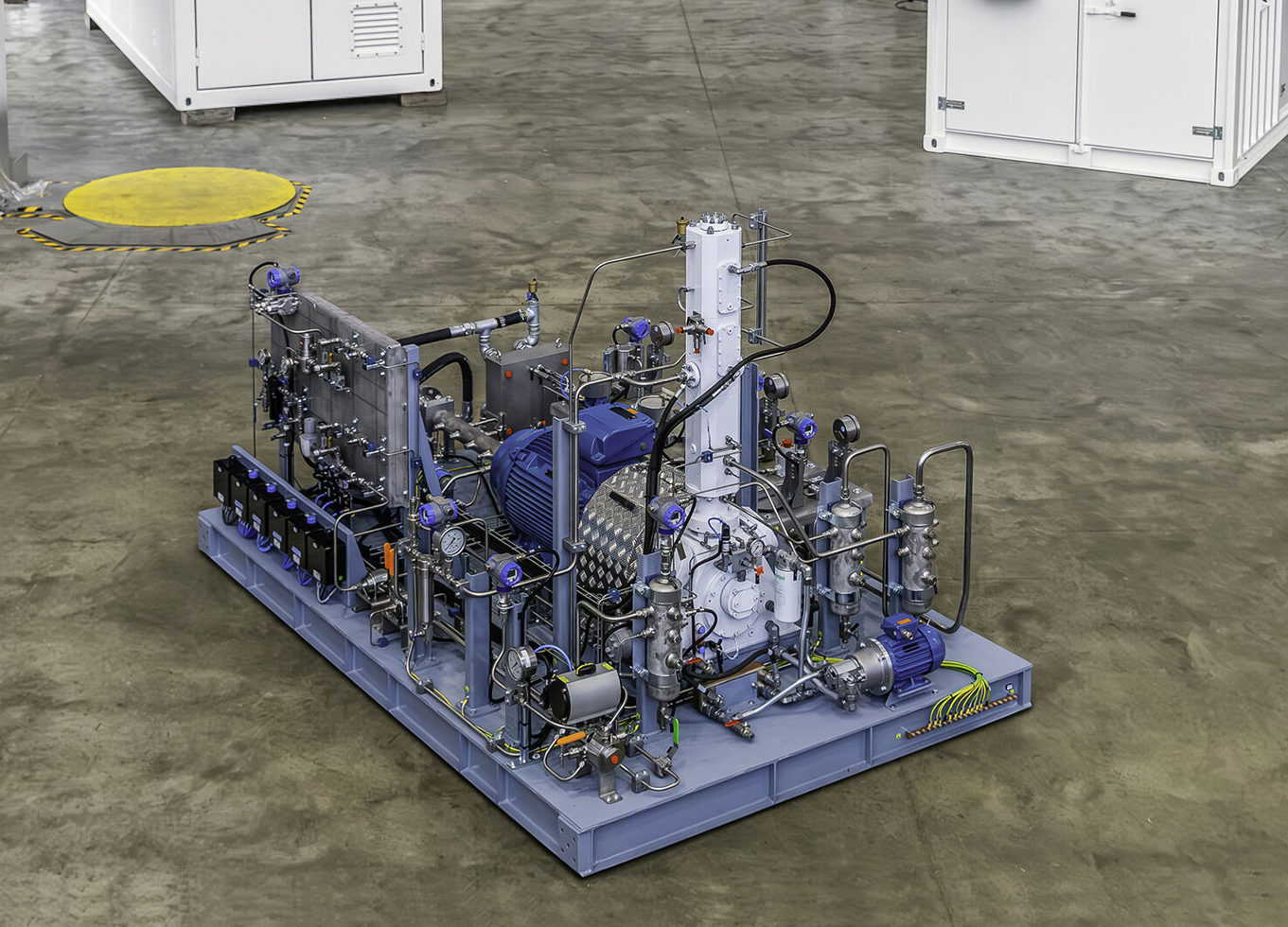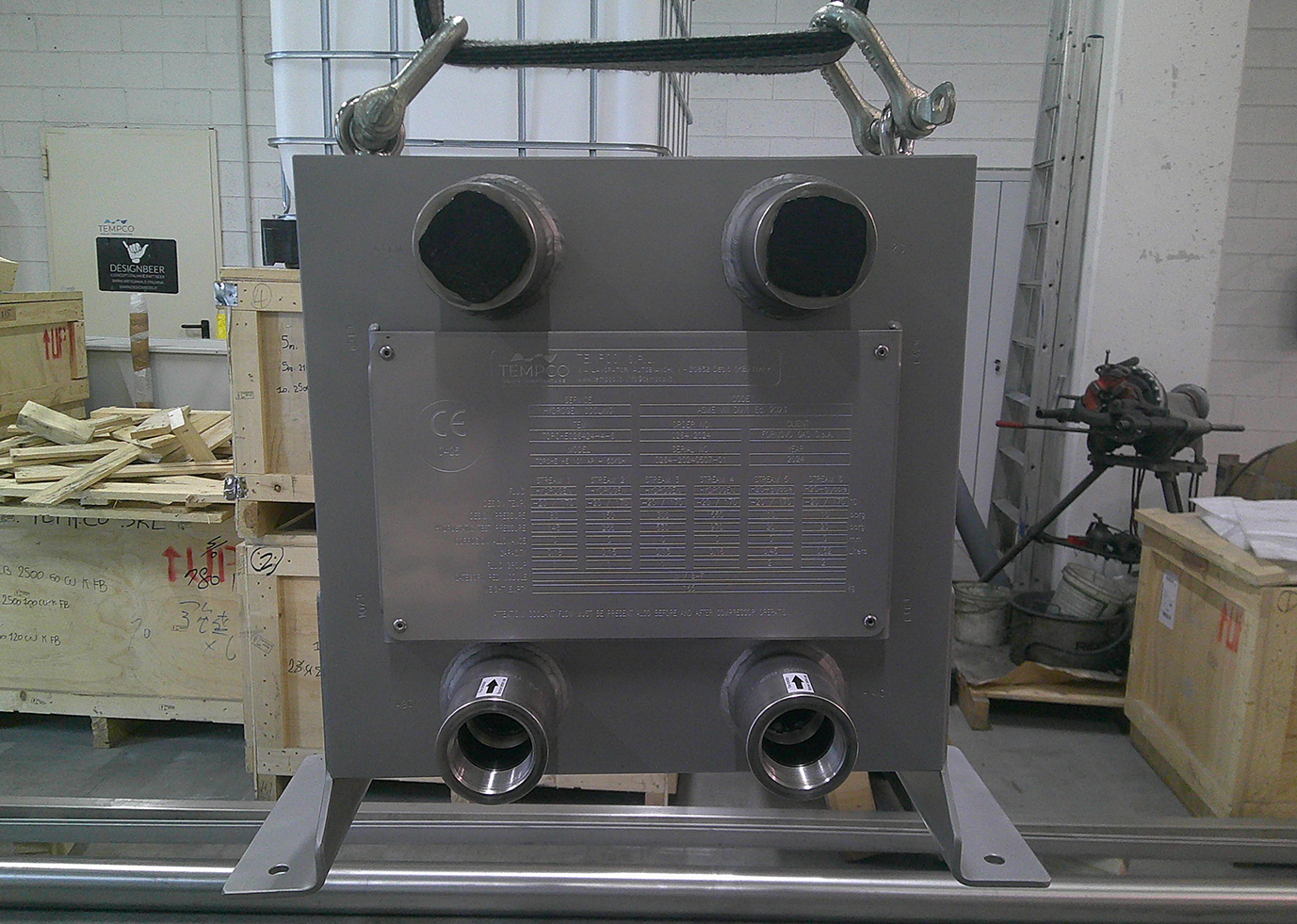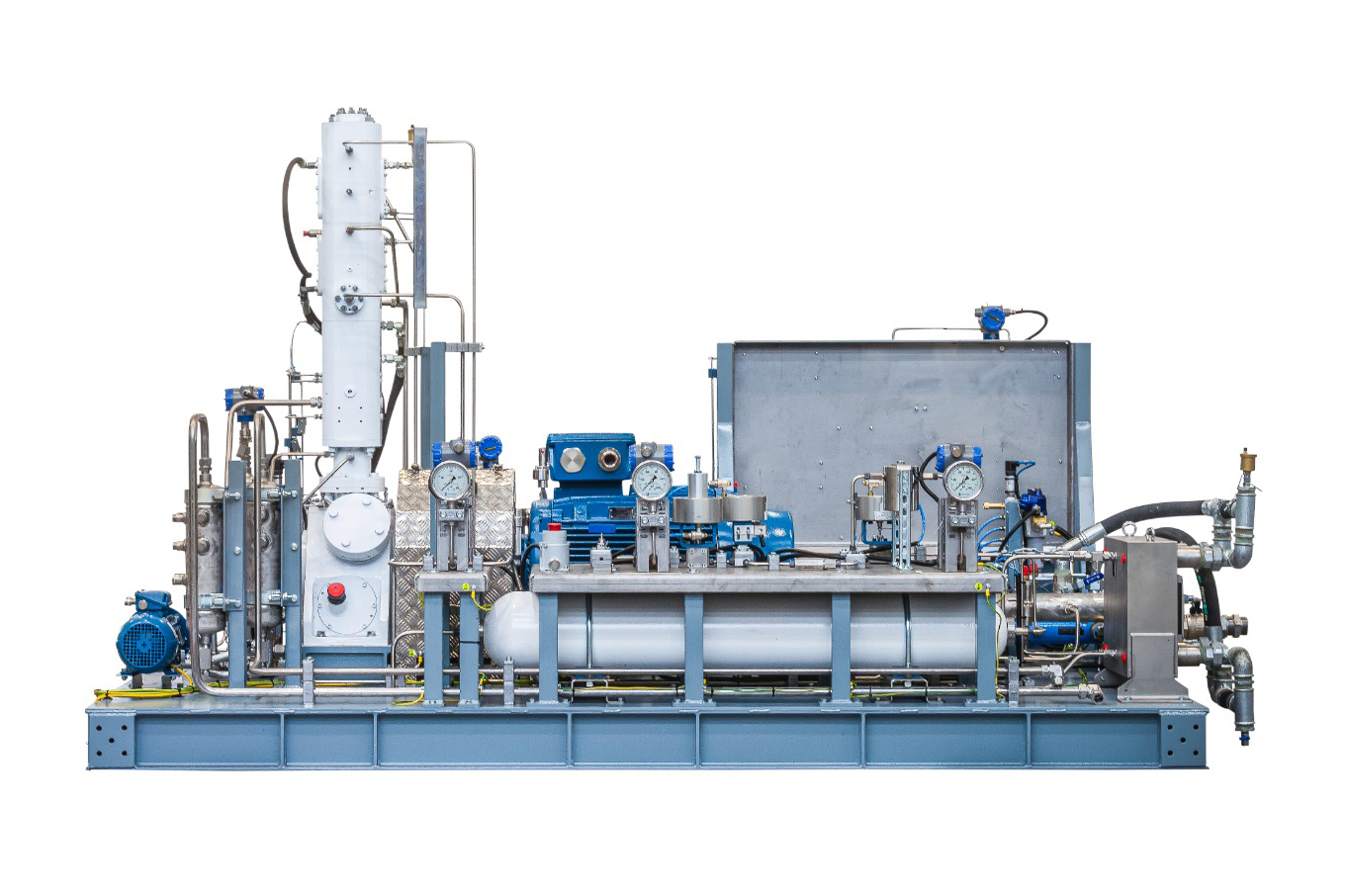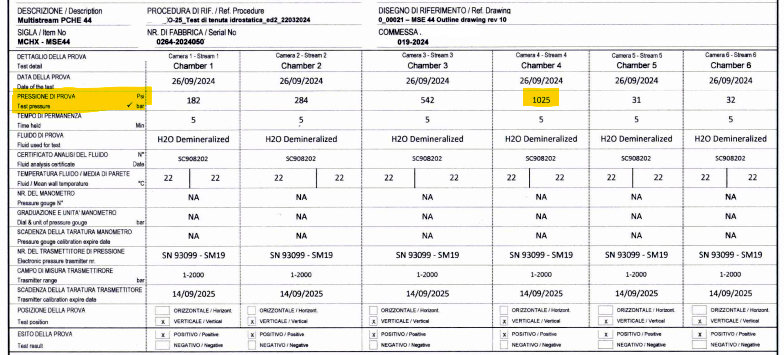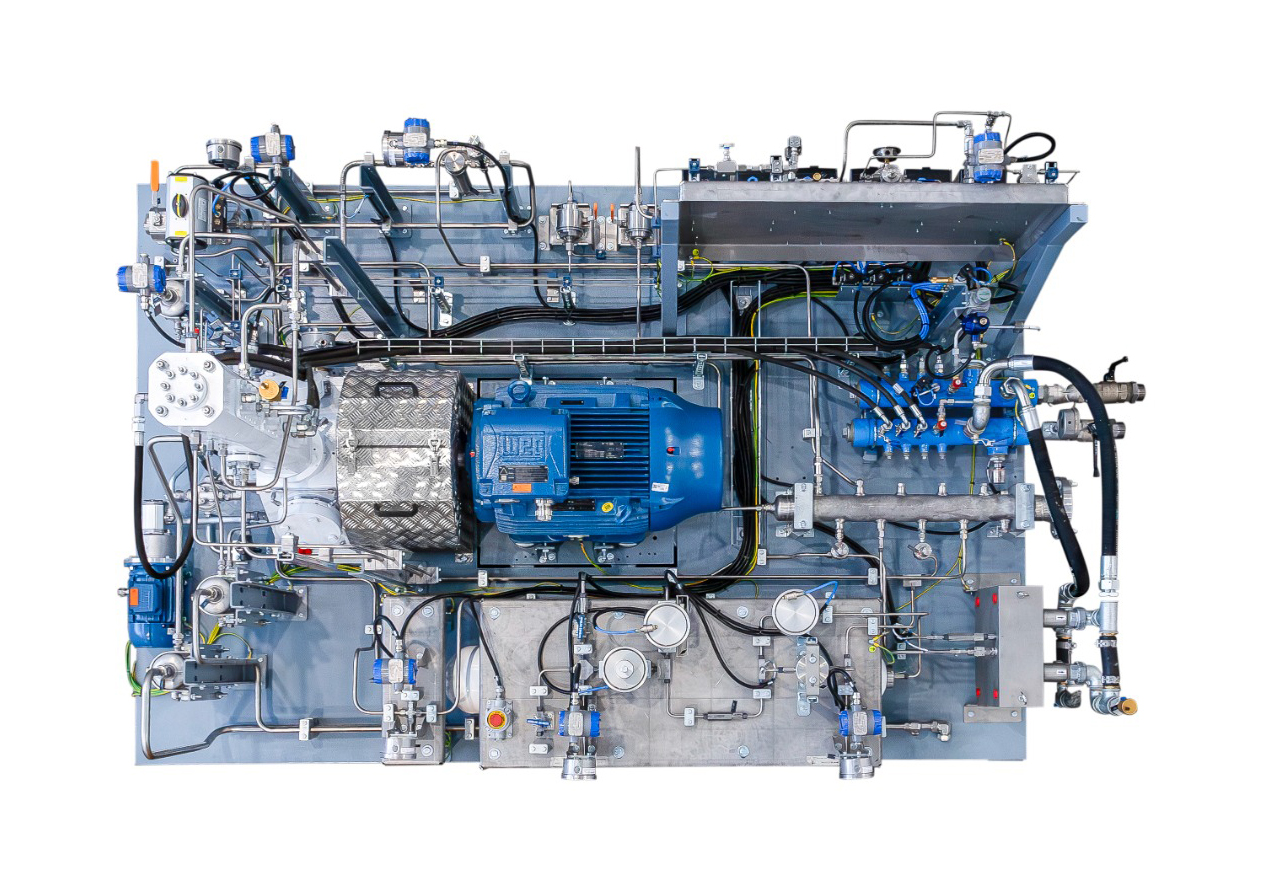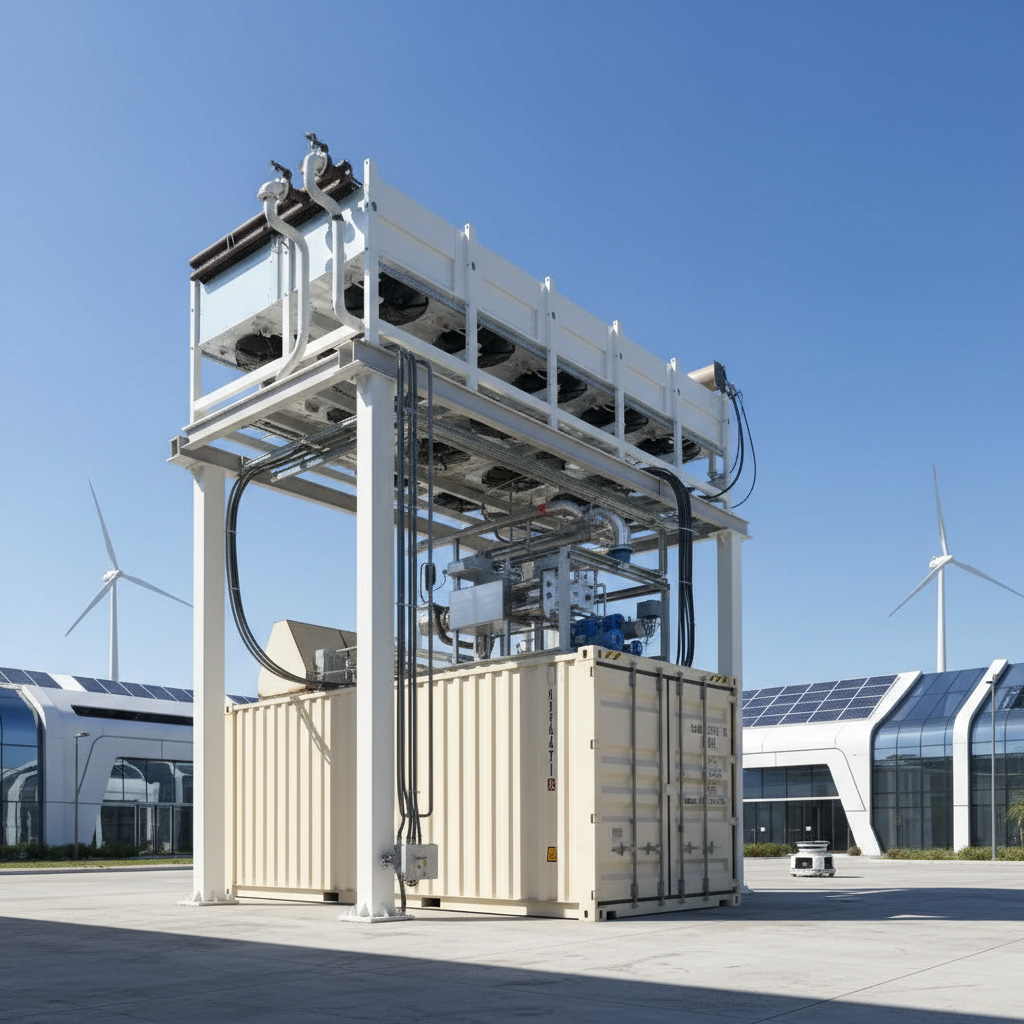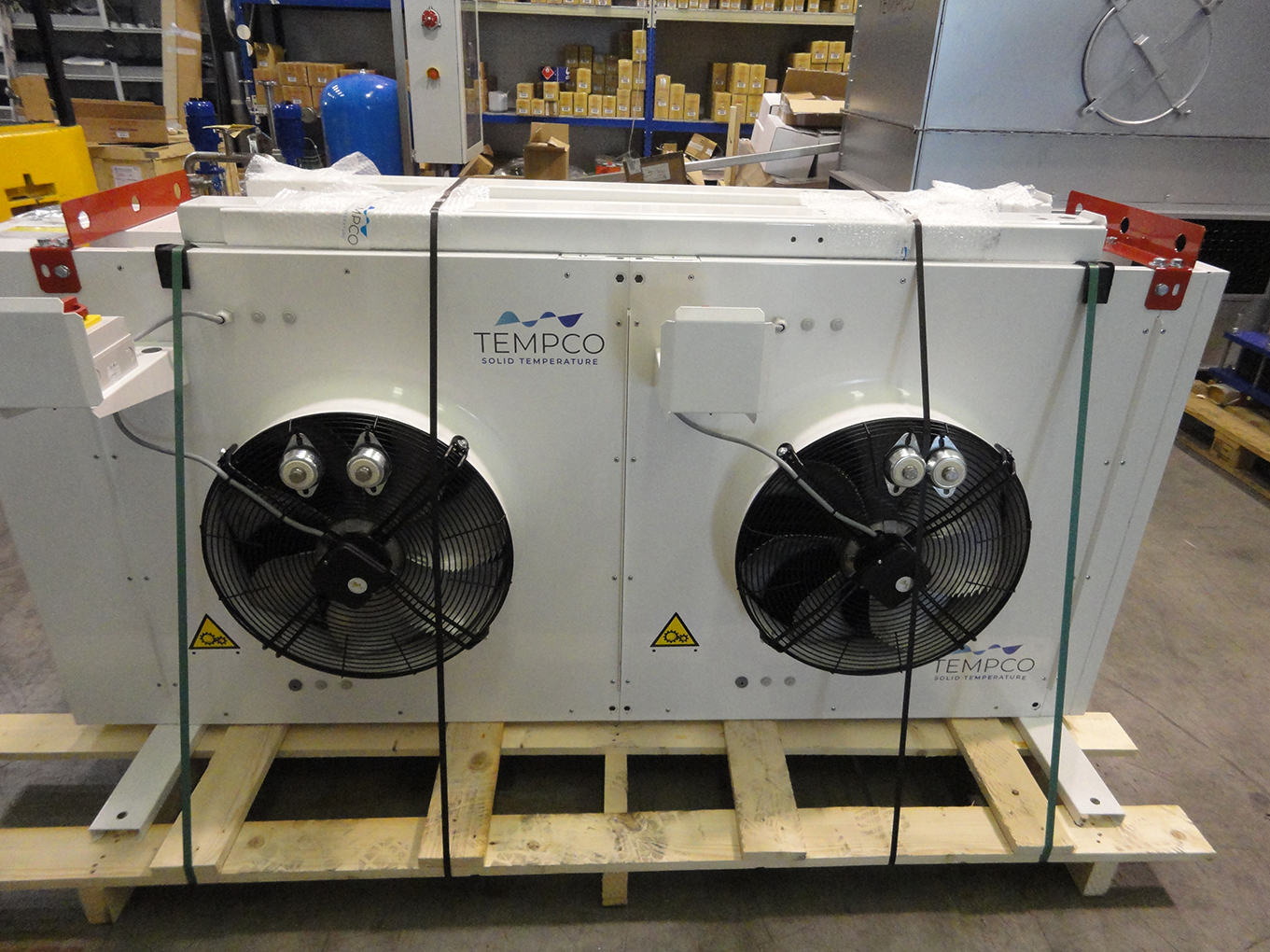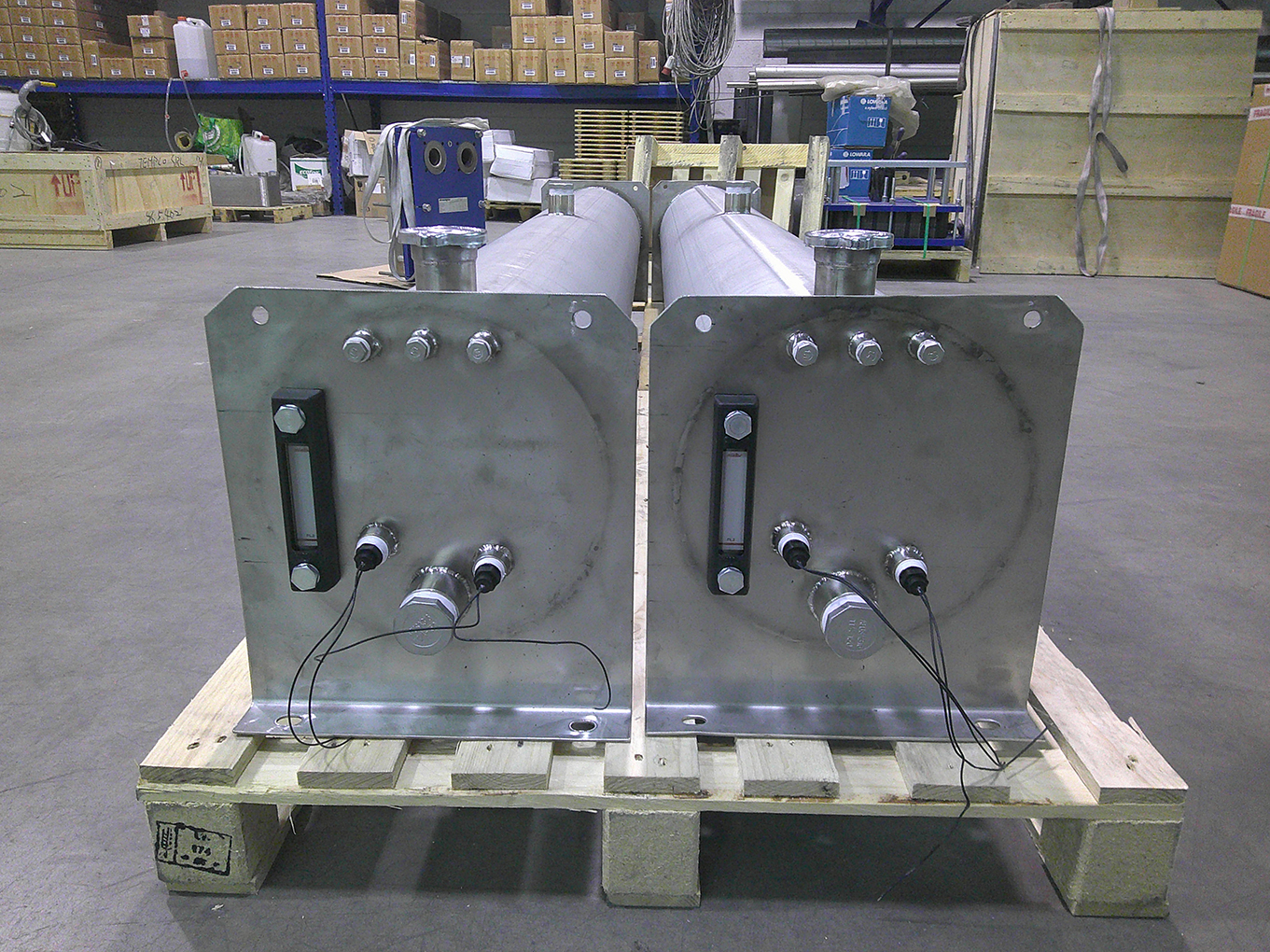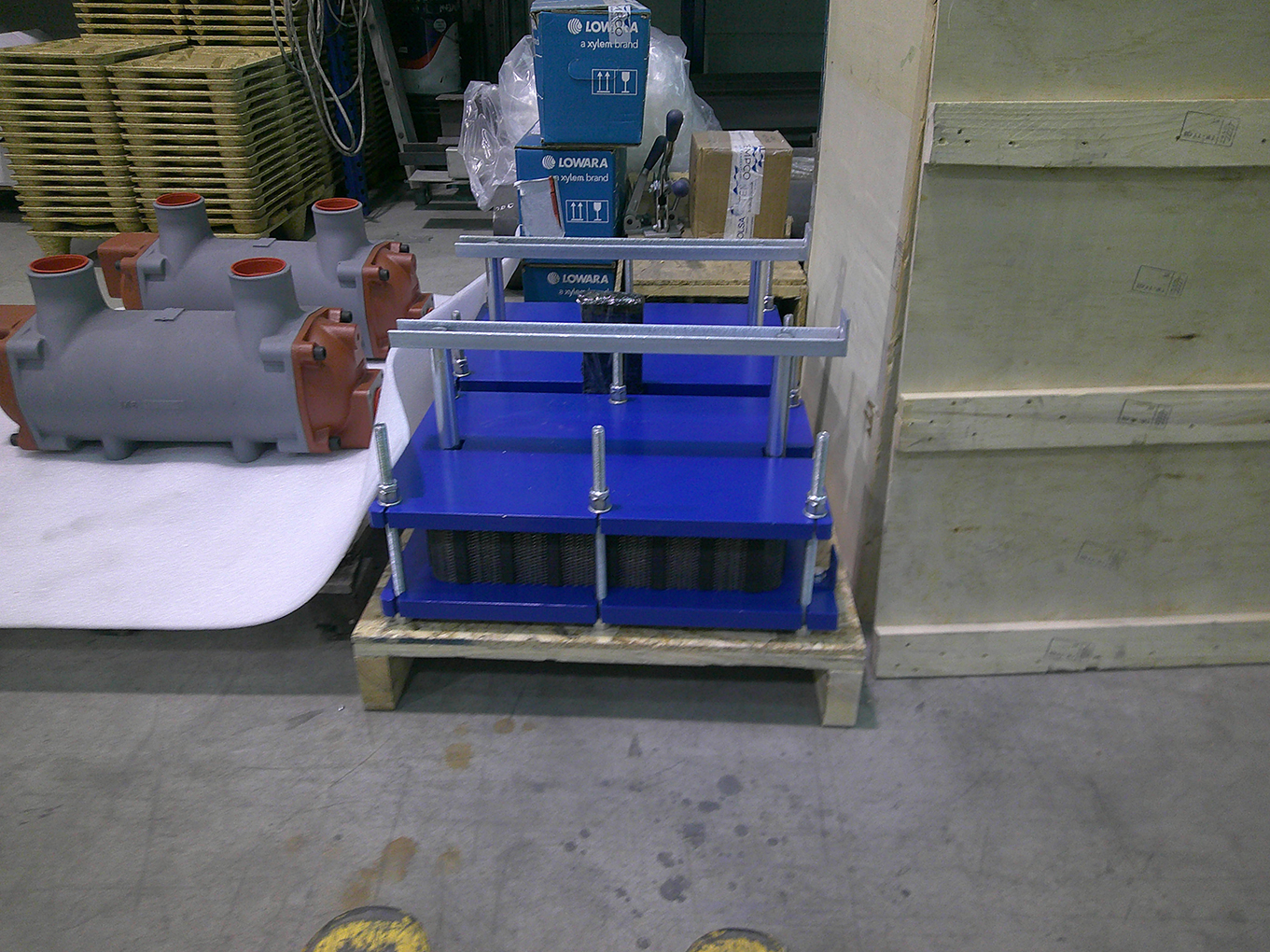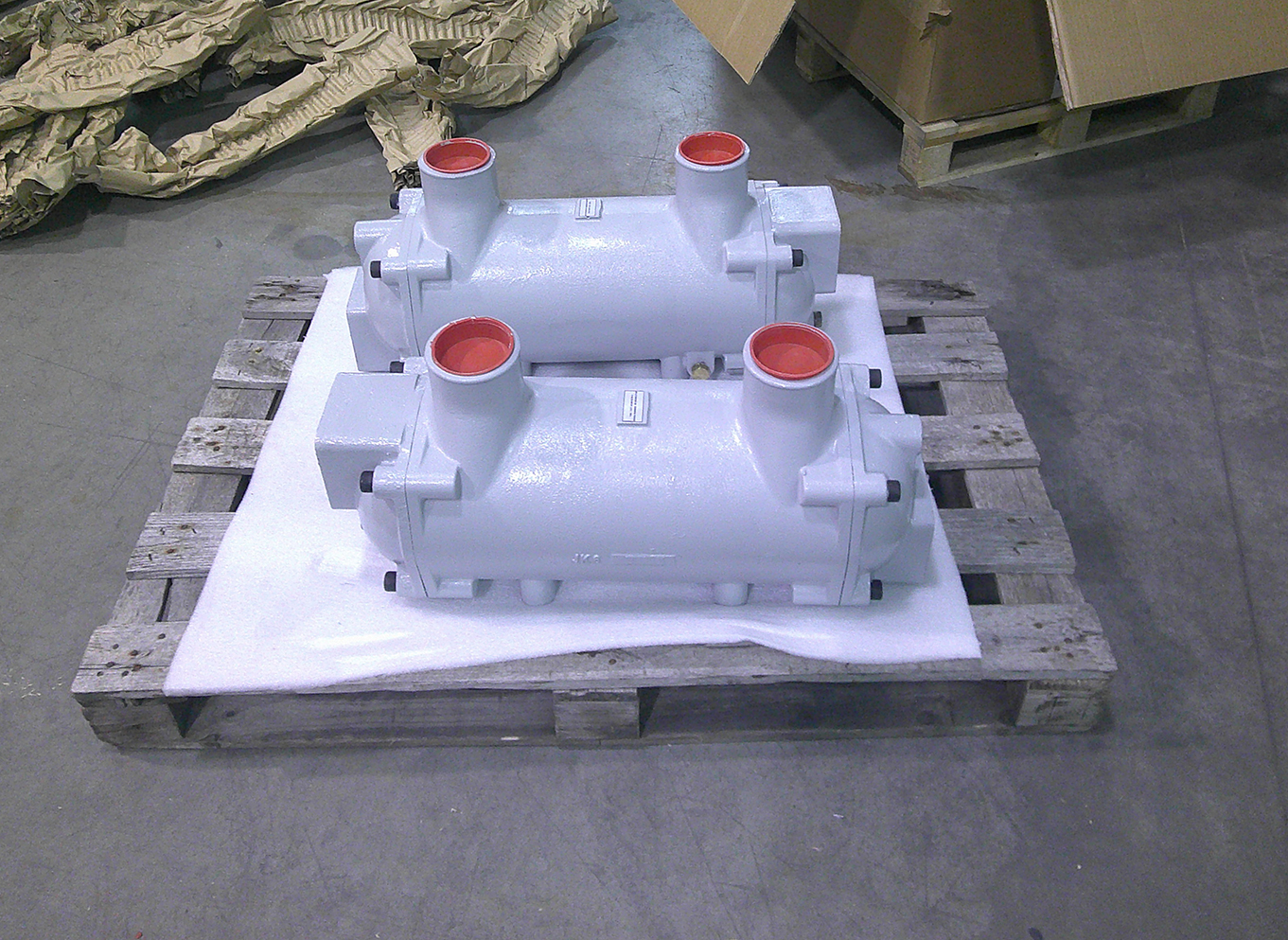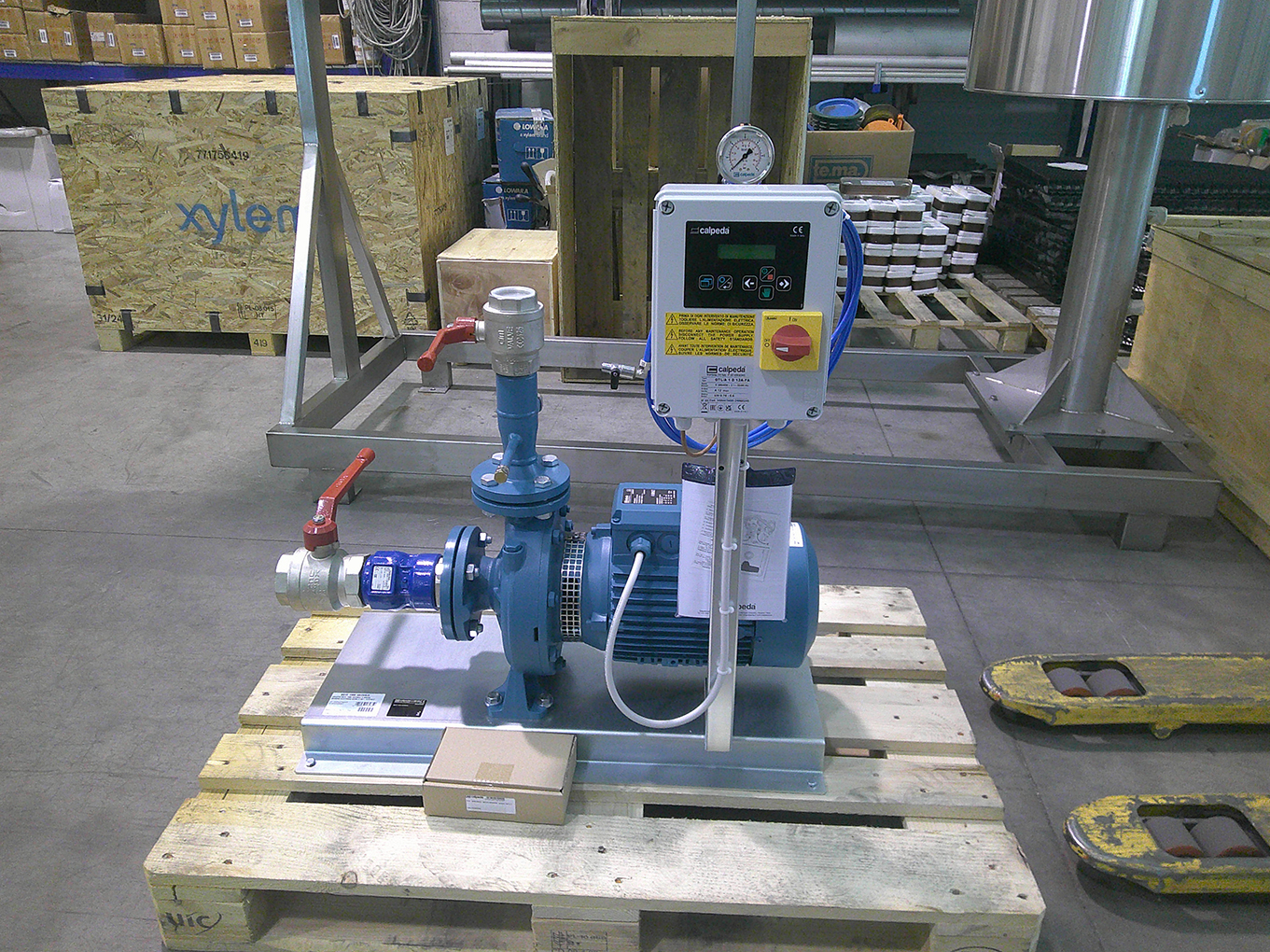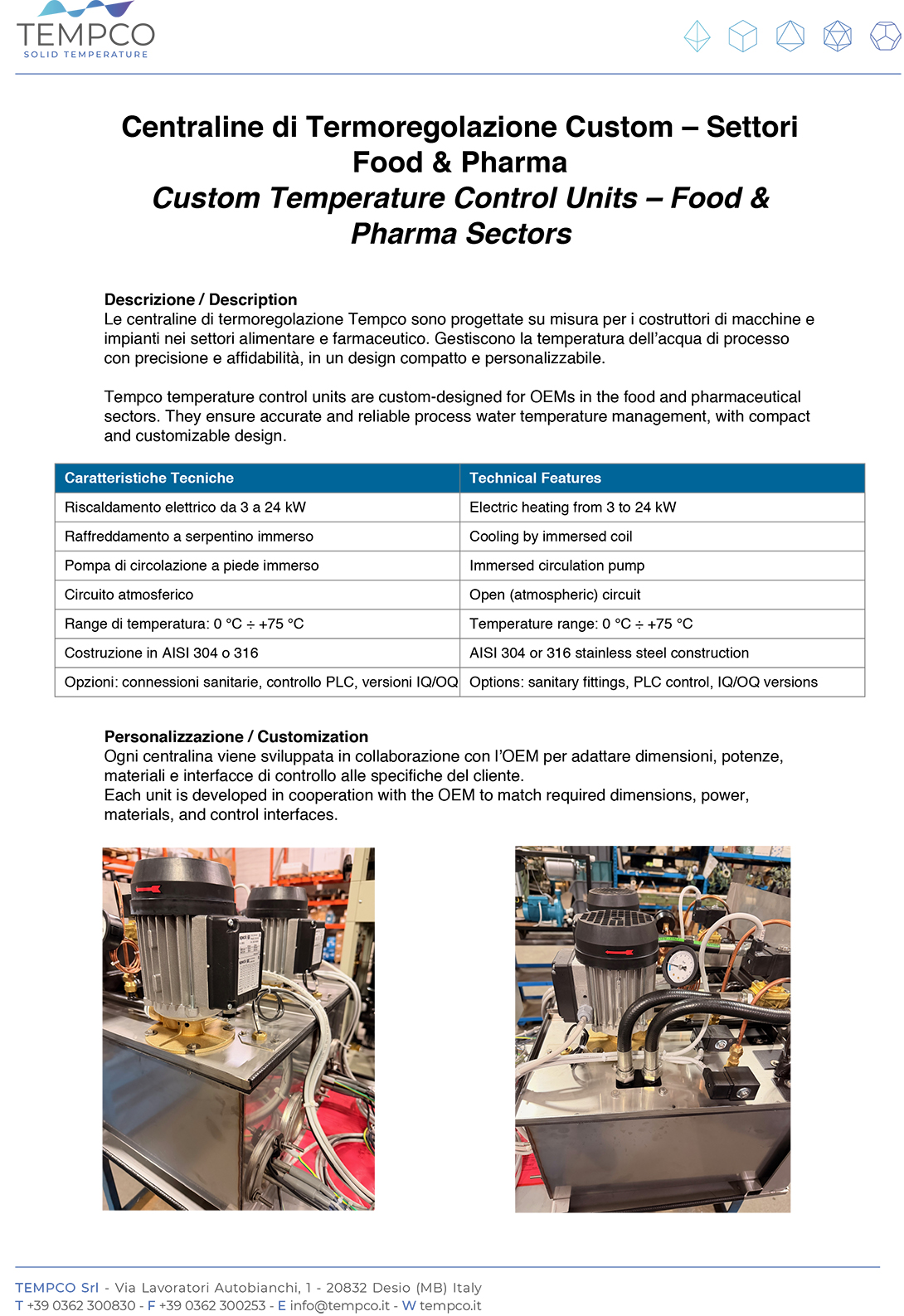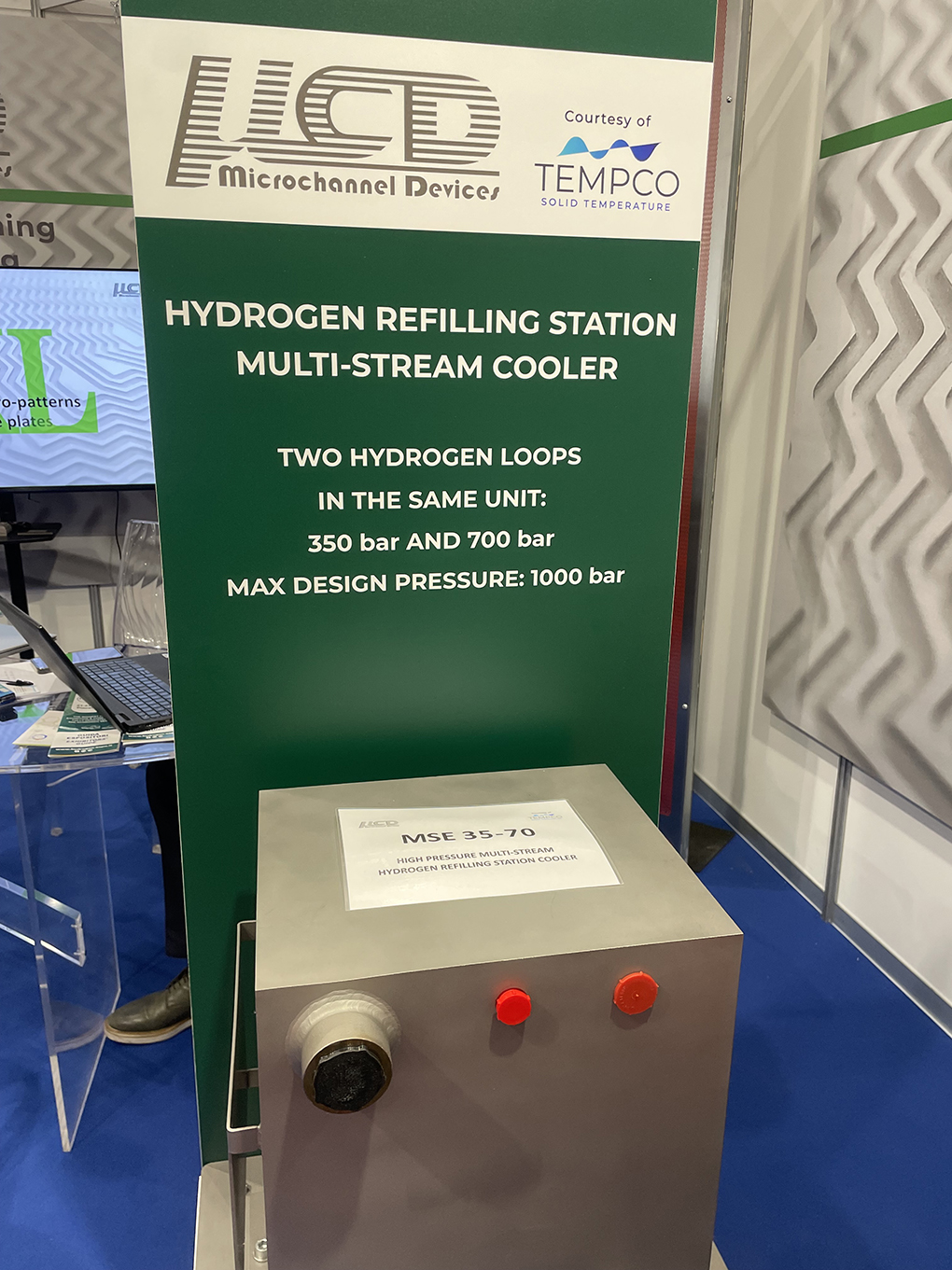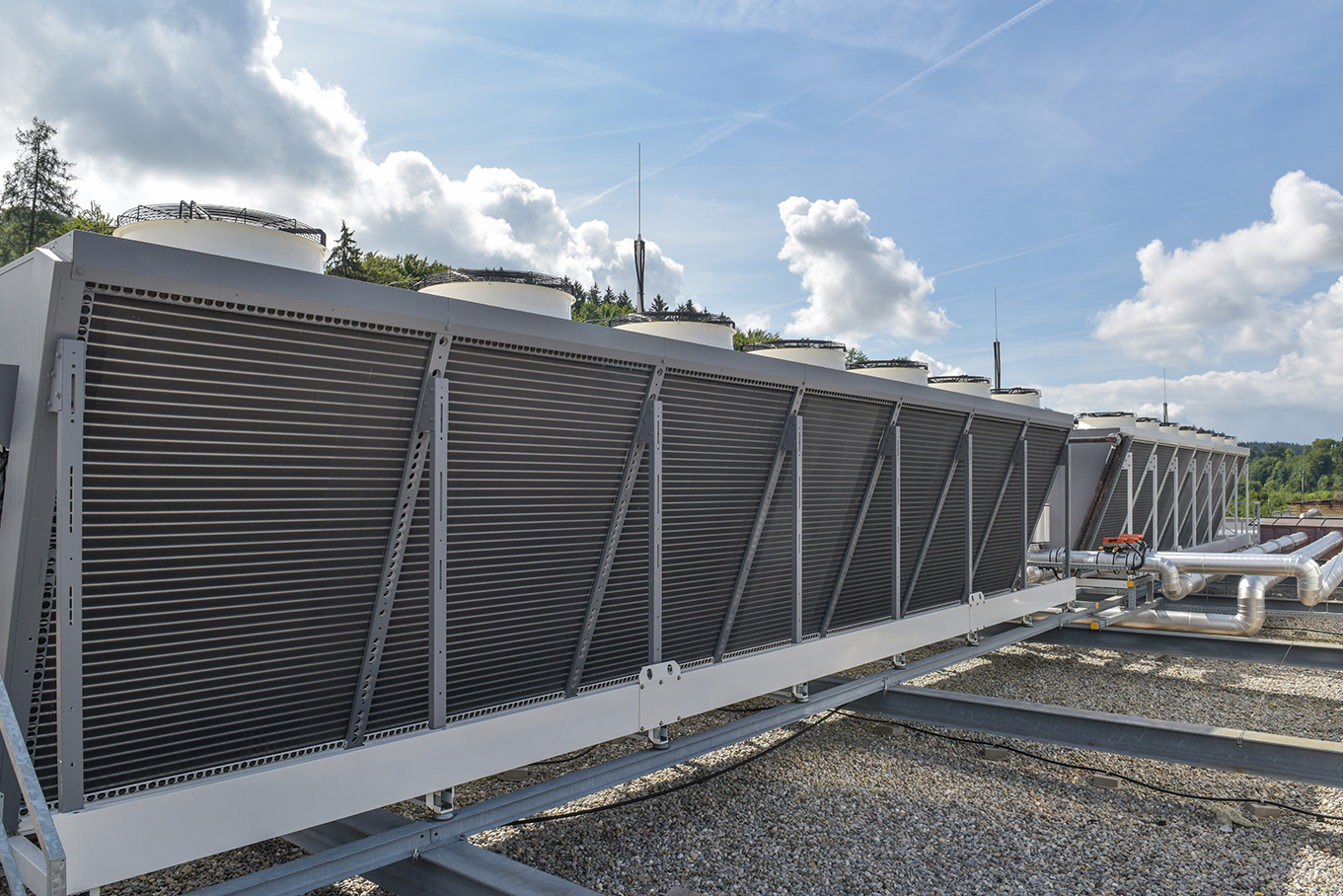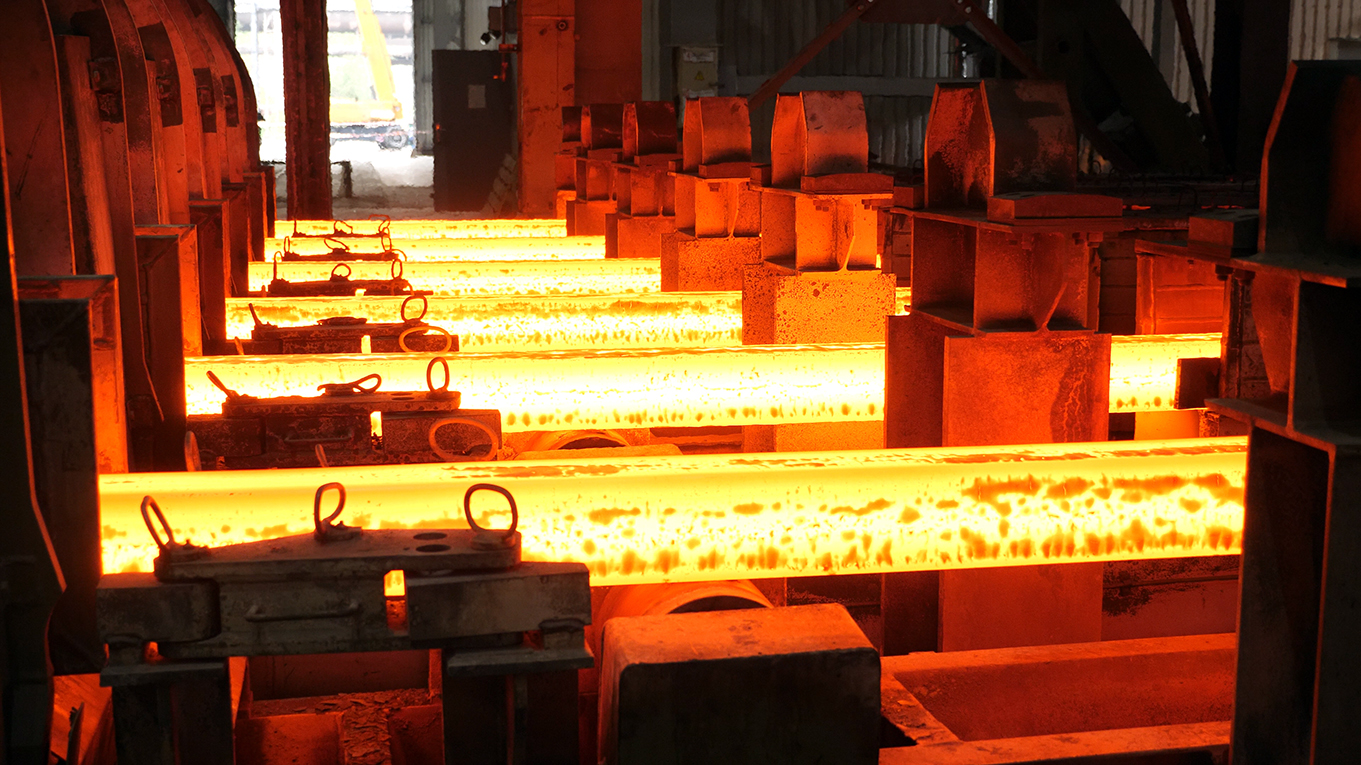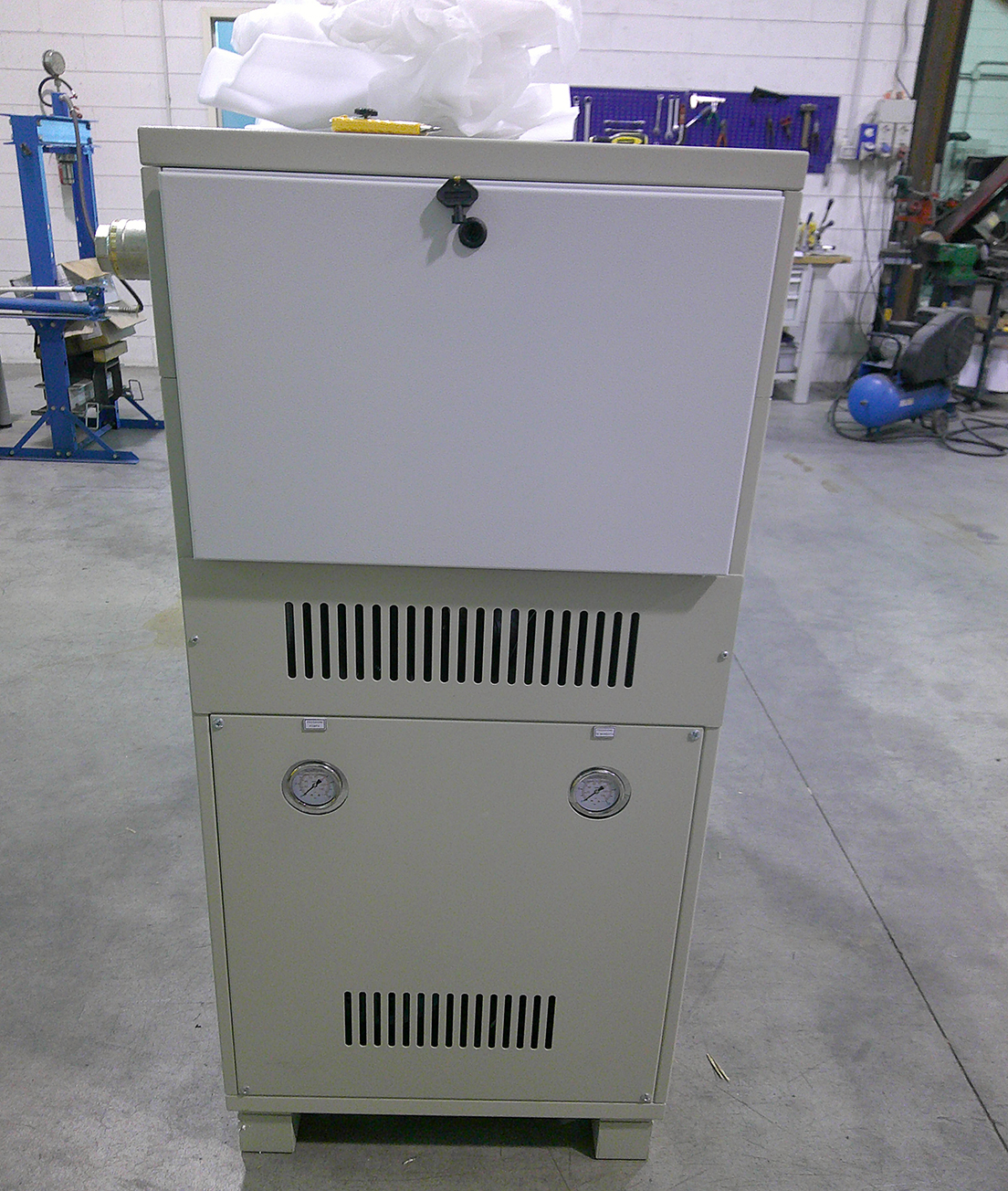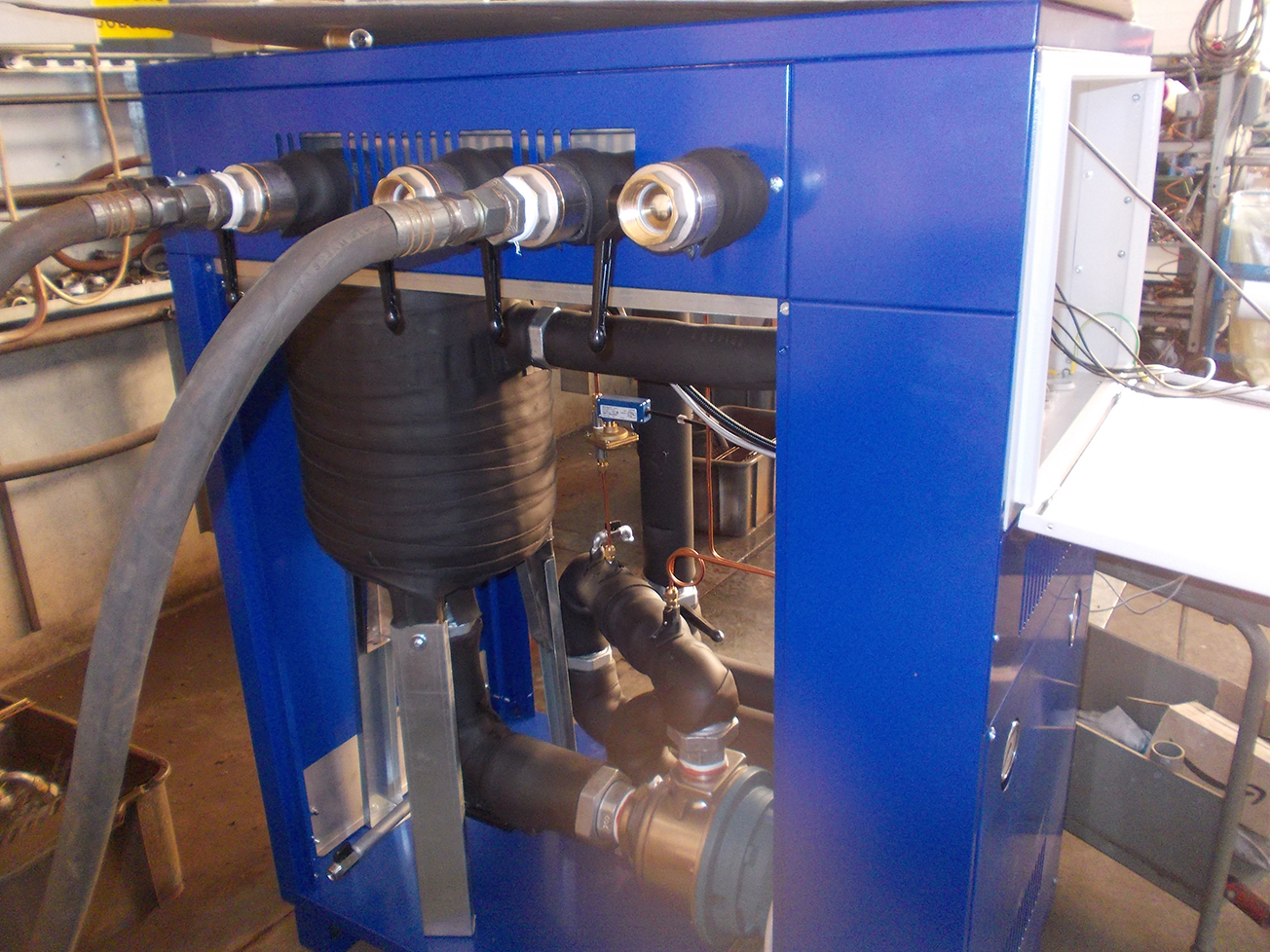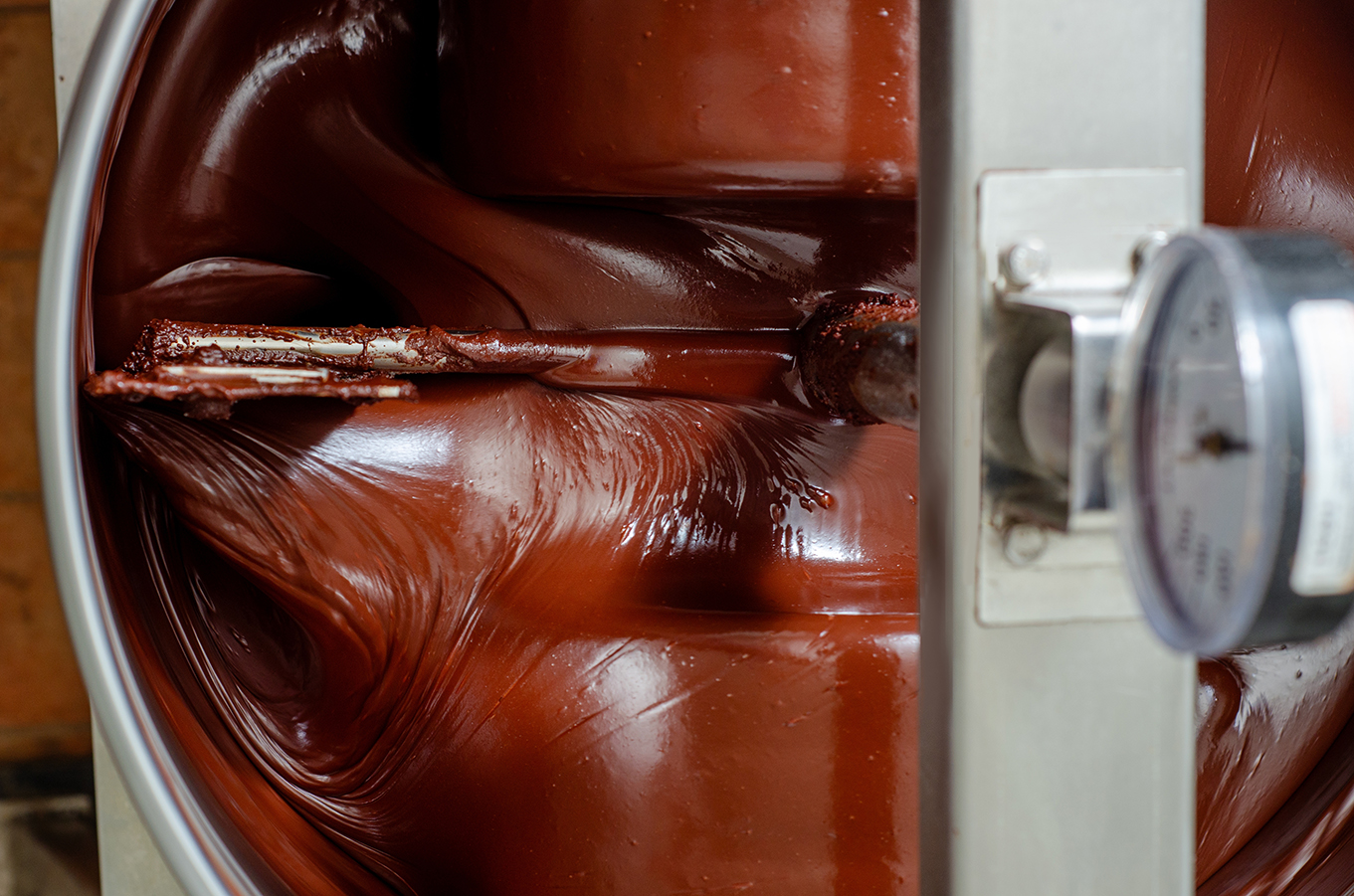In critical sectors such as pharmaceuticals and food industry, precise temperature regulation and process hygiene are not just requirements, but fundamental pillars to guarantee product quality and safety. Tempco, thanks to its experience in industrial thermoregulation, has been meeting these needs for years for manufacturers in the pharmaceutical and food sectors with its range of T REG HC E thermoregulation units, which are now also available with an all-stainless steel frame, designed to raise standards in these sectors.
The choice to use stainless steel for the frame of our T REG HC E temperature control units is strategic, as it specifically meets the most stringent hygiene and durability requirements. This material guarantees excellent corrosion resistance, which is essential in environments requiring frequent cleaning and the use of sanitizing agents. Its smooth, non-porous surface prevents the accumulation of contaminants, making cleaning easier and ensuring superior sanitization, in full compliance with the stringent regulations to which the Pharma and Food sectors are subject.
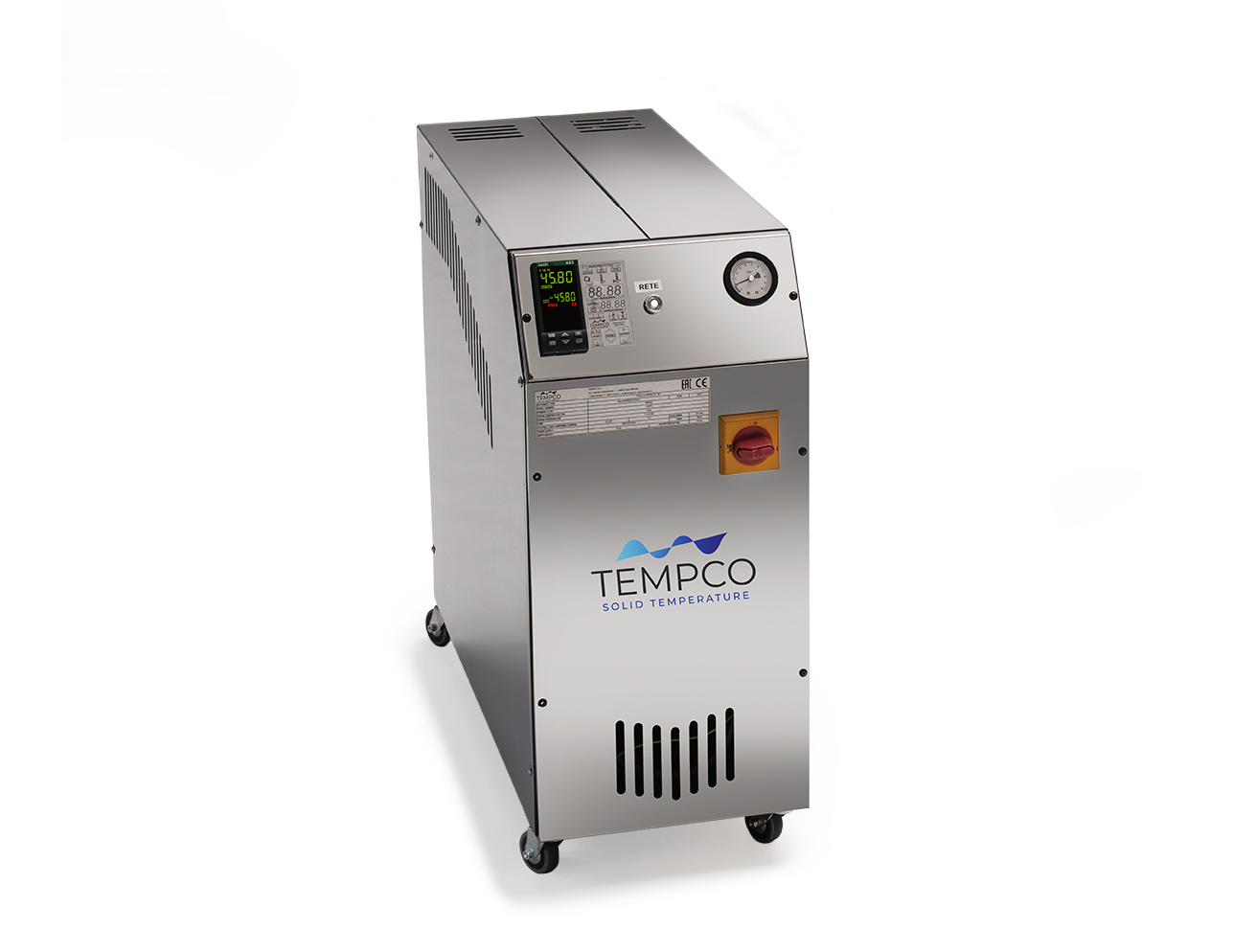
T REG HC E control units are designed to deliver high-level performance, putting technology at the service of quality. They guarantee operating temperature precision of ±0.5°C thanks to advanced PID electronic control, essential for the stability and repeatability of production processes. Operating within a temperature range of +30° C to +300° C and managing fluids such as pressurized water (130°C) or diathermic oil (180°C or +300°C), they are suitable for a wide range of applications, from reactor heating to thermal control in pasteurization processes. Each component, from high-flow centrifugal pumps to high-efficiency plate heat exchangers, is selected to ensure reliability and consistent performance.
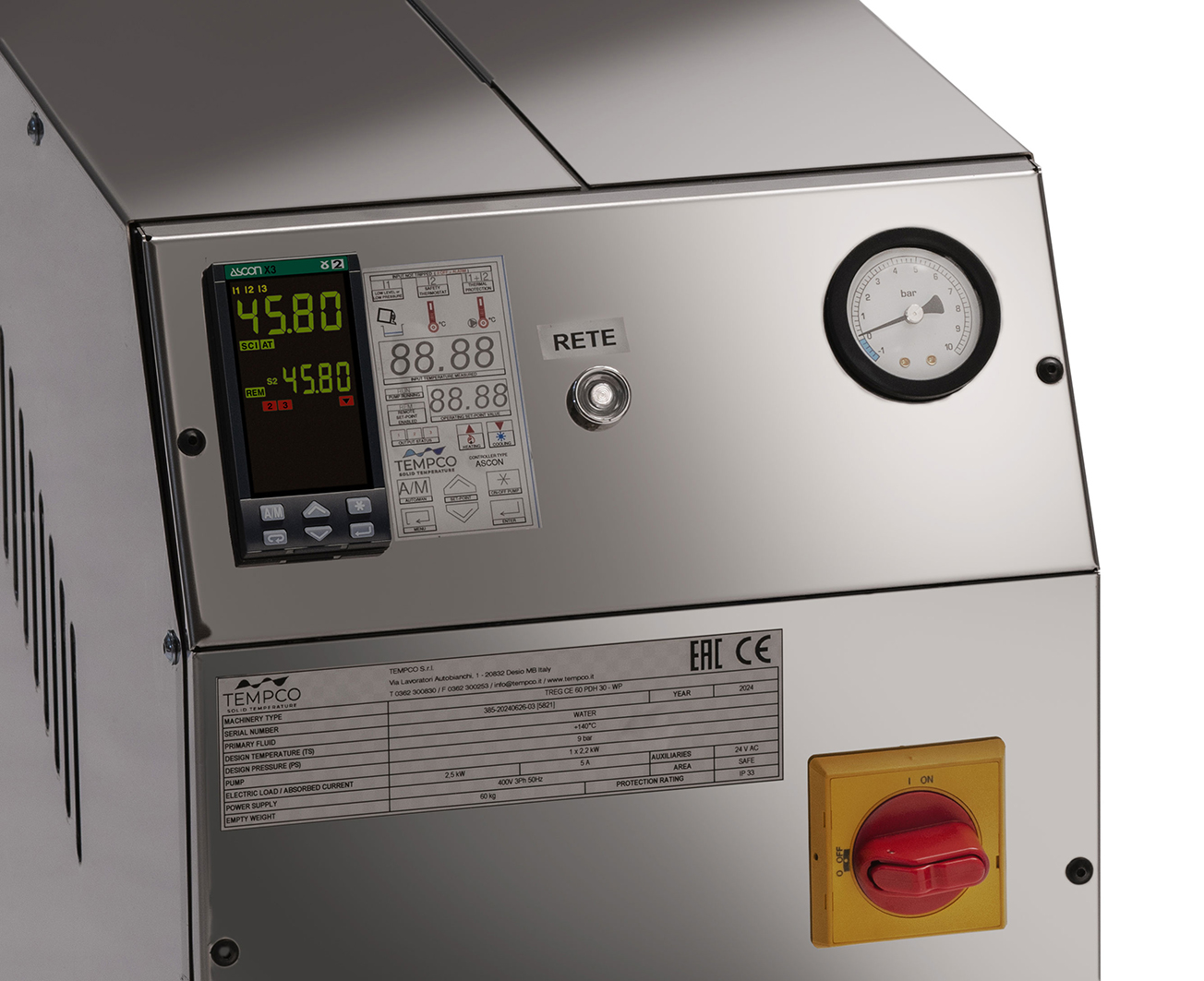
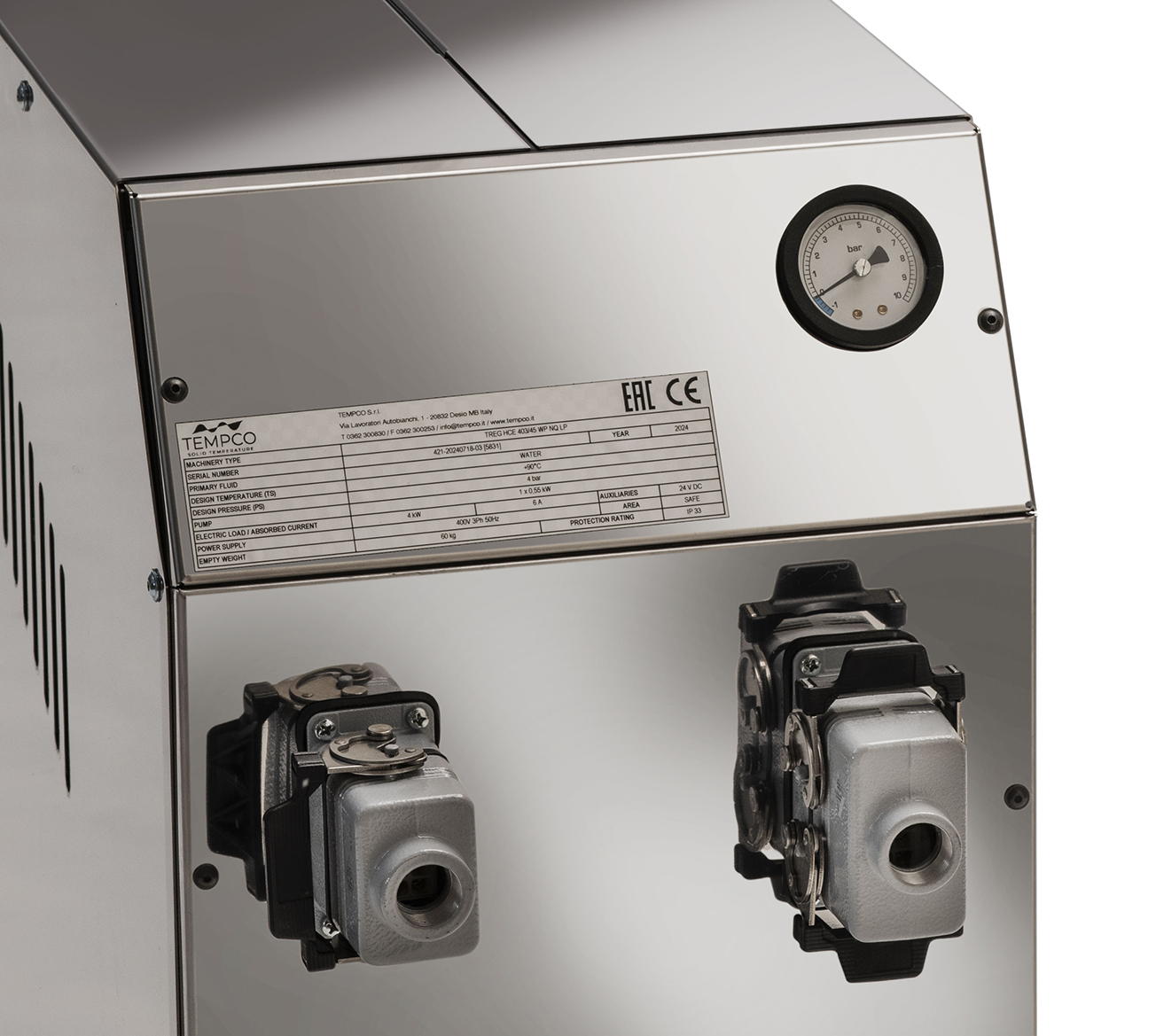
The applications of T REG HC E thermoregulation units are diverse, in addition to the customization options Tempco offers. Whether maintaining precise temperatures in mixing tanks or producing hot water for specific needs, the T REG HC E is the ideal solution. Tempco also offer a wide range of options upon request, allowing each unit to be customized with special pumps, increased cooling capacity, or communication interfaces for seamless integration into the user’s automation systems.
The Tempco T REG HC E stainless steel thermoregulation units are the perfect embodiment of Tempco’s commitment to offering cutting-edge temperature control solutions, combining precision with hygiene and reliability. Contact us to find out how our thermoregulation units can elevate the standards of your production processes in the pharmaceutical and food industries.
